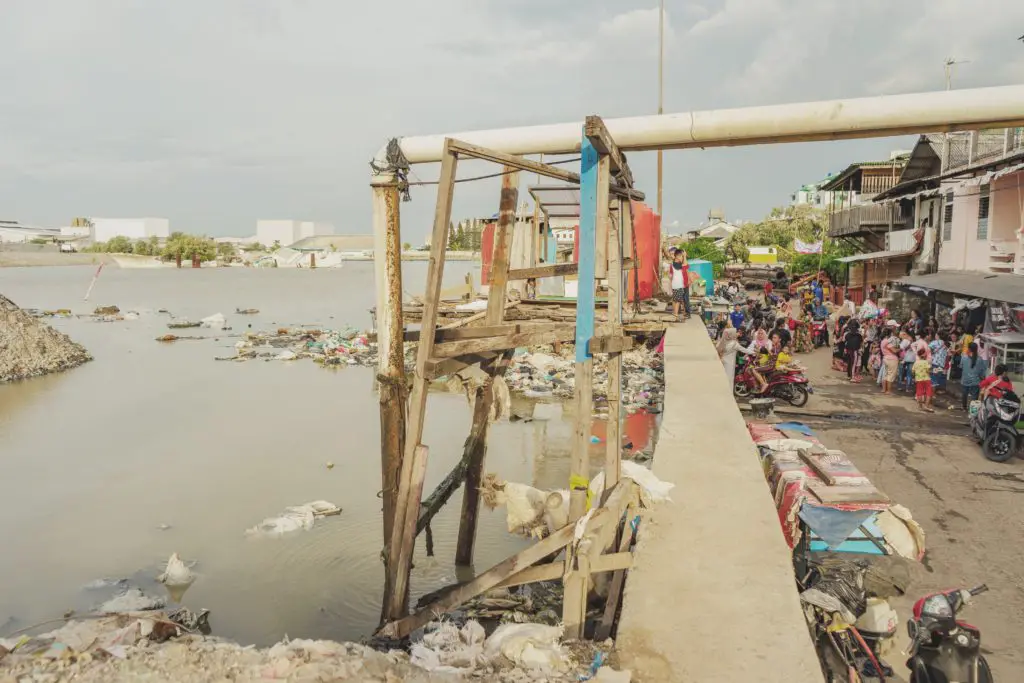Reduce Consumption
5 Facts You Need to Know From the True Cost of Fashion

So its an old documentary but one that hit me at just the right time, one I think needs to be rediscovered.
I was sick of constantly shopping and eternally feeling dissatisfied and empty afterwards.
In 2013 the Rana Plaza disaster happened and to be honest, it probably just passed by me like any news item. And my family is from Bangladesh. You’d think it would hit home.
But it didn’t until home until 2015 when the True Cost of Fashion documentary came out. I remember that documentary caused a bit of a stir. I remember some of the You Tube influences that I followed at the time mentioned it and that’s when I paid attention. It sounds sad but that’s what it took for me to pay attention.
I was slowly exploring the idea of a capsule wardrobe at the time and getting acquainted with the idea of fast fashion and what that was all about. But it was only when I saw the documentary that it really hit me. And I knew I had to change.
Again, with any global problem, it requires a global solution. It requires government and corporations and the people who run them to act differently. Actually no, from what I have learnt so far I think it needs to take huge systemic changes in the way our economy is organised to change the fashion industry and the negative environmental and social impacts of the industry.
That aside, I do want to look at what a humble consumer can do.
And one of the things I could do was to become better informed.
In this blog post, I summarise 5 facts I took away from the True Cost of Fashion. I rewatched it recently and there is definitely 5 themes that are worth highlighting.
I did some research into some current facts and figures but that information will have to wait for another day.
For now, here are 5 things you need to know from the True Cost of Fashion documentary:
1. Imperfect materials - The environmental impacts associated with materials needed to make clothing and accessories
- Cotton manufacture – the industrialisation of agriculture is no less prevalent than in the cotton industry, where instead of being in tune with nature, cotton production is like a factory line. Biodiversity is reduced which adds to soil degradation and a host of other ecological impacts. 80% of cotton is genetically modified and the ecological impacts of genetically modified crops are poorly understood. These crops require regular treatment with insecticides – millions of acres are sprayed with round up. And it takes 24 years of drinking water to make one cotton t-shirt.
- Leather – Production of leather in factories in India has lead to pollution the river Ganges, soil contamination, groundwater contamination and vegetable crop contamination. There are high levels of chromium in all these sources.
- Synthetics are essentially made from oil. I don’t need to tell you the environmental impacts of fossil fuels.
- Viscose comes from forests and only 30% of what is taken from forests actually gets used
2. Disease and Death - The health impacts associated with clothing production
- Cotton and Monsanto – There are claims that the seed company Monsanto has a monopoly in India to sell their genetically modified cotton seeds. These seeds have been modified so they are less pest resistant, hence farmers are forced to use chemical pesticides, which places farmers into further debt. The soils become contaminated, which reduces productions levels. These chemicals impact their health or the health of family members, especially children through birth defects, placing the farmers into further debt to pay for medical expenses. Monsanto also supplies the medicine the farmers need to buy. The cumulative pressures have been attributed to the fact that 1 farmer commits suicide every 30 mins in India, usually by drinking a bottle of pesticide to die. Around 250,000 suicides in the last 16 years were recorded at the time the film was produced. This is the largest recorded wave of suicides in history.
- Chromium pollution as a result of leather production – contamination has been attributed to skin rashes, boils, numbness, cancer, jaundice. Struggling families are using what little savings they have to treat diseases linked to chromium contamination in India.
- The factories where clothing is produced are not always safe – as mentioned, the movie was made shortly after the Rana Plaza disaster. I remember very clearly when that happened and I have to admit, I am still surprised it was such a big news item. But it was. And rightly so. To me, it can’t be denied that as the price of clothing decreases (those prices are going down so much), either production needs to stop or corners need to be cut. And of course, corners are being cut, putting the safety of works into jeopardy. The Rana Plaza disaster was followed by many more, so the signs were clear.
3. Modern slavery - The social impacts associated with clothing production
- Wages – the fashion industry is highly profitable however the profit is going towards a small handful of business owners. One in 6 people work in the garments industry making it one of the most labour-intensive industries in the world. However, factory workers manufacturing clothes are often not paid a living wage. Around 85% are women and they are paid less than $3 per day.
- Oppression – unionism is discouraged. Abuse is common. Being forced to work long hours is not uncommon. The movie followed a single mother in Bangladesh who was forced to leave her child with her extended family in the country so she could continue with her job in the garment factory in the city. In Cambodia, demonstrators demanding a living wage around were attacked by government officials. Brutally attacked. The movie didn’t shy away from that footage. And all they were demanding was $US160. Get this though – $160 a MONTH. Brutally attacked for that.
- Low wages is better than no wages – the movie didn’t speak to business owners directly but they did talk to a couple that worked in the industry and one opinion expressed was that low wages is better than no wages. The business model adopted by fair trade fashion companies such as People Tree demonstrates how flawed this thinking is. The documentary shows how fair trade business practices can give women jobs that guarantee their health, safety and dignity. So a fair wage is better than no wage.
- The decline of local economies – in 1960’s 95% of clothing was made in America, now it’s 3% while the rest is outsourced. Local production in developing countries is also being decimated under the fast fashion system, as cheap garments unwanted by Western countries floods developing countries, killing a once-thriving local garments industry.
4. Waste - The environmental impacts of clothes at the end of its life cycle
- Overconsumption – we consume 80 billion pieces of clothing, which is 400% more than what we consumed 2 decades ago.
- Disposal – fashion has become disposable. Landfill has increased over 10 years. Around 82 pounds of textile waste is disposed each year and it’s not biodegradable. 87% are incinerated or in landfill. Both disposal options release harmful gases, contributing to global warming. Only 10% clothing donated to charities is sold. If charities can’t sell the items they dump them to cheaper markets in developing countries. They become our dumping ground. As mentioned, this just decimates the local garment industry in developing nations.
- Recycling – The majority of the clothes sent for recycling are not recycled
5. Materialism and capitalism - The social impacts of fast fashion
- Materialism – materialism is harming our feeling of self-worth. We are sold the ideal that owning a piece of clothing will lead you towards a happier life. Clothing companies are well-tuned to using marketing to sell an image of the life people want to lead, not the item of clothing itself. Our economy is based on materialism – this is at a high price, allowing our minds to be manipulated by marketing. Marketing plays into our desires and hits us where we are vulnerable, leading to our need to shop.
- Capitalism – systems produce the outcomes they are meant to produce. Companies are not inherently evil. They are not full of evil people out to exploit workers and harm our environment. Companies are operating within a system that is producing the results that it is set up to produce – accumulation of profits at all costs. The market is demanding more for less, wages need to go down, companies seek cheap labour, they are forced to go into countries where labour is cheap and they have no control over working conditions and in the end the very few in the western world profit from their need to work. An interesting point made in the movie – we feel free to criticise our health system, education system and the like and have the appetite (somewhat) to accept sweeping changes in these areas. However when it comes to our economic system – well, apparently it’s impossible to change.
So I could go on but that is all I can manage for now.
But one last point from the documentary that sums up the issue – our economic system is primarily based on the growth of one measure – GDP. GDP only measures what is a commodity – our natural environment, social welfare and our health are not measured in GDP. Furthermore, capitalism operates as if it is limitless (growth is infinite) while the natural world and our biology is limited – for the two to be in align, a new system of account is needed.
And the final takeaway message from this movie:
We need to pay the true cost of fashion and refuse to pay prices that don’t reflect the social and environmental costs associated with it.
It’s a tough one. I’m a mum, working full time. I do need things to be convenient, not complicated. And shopping ethically… well its something I am still struggling with, to be honest.
But there is one element I can control without giving up too much and that is to realise that I don’t need to buy into fast fashion marketing. And by organising my wardrobe in a smarter way, I can finally say I can opt-out of the fast fashion consumption cycle.
If you want to make the change, let me know below
Tahsin xxx




